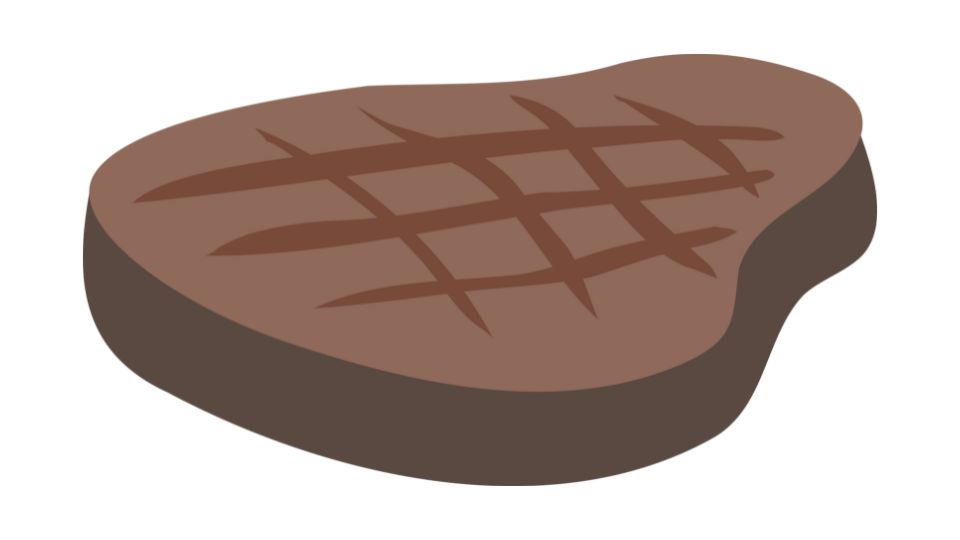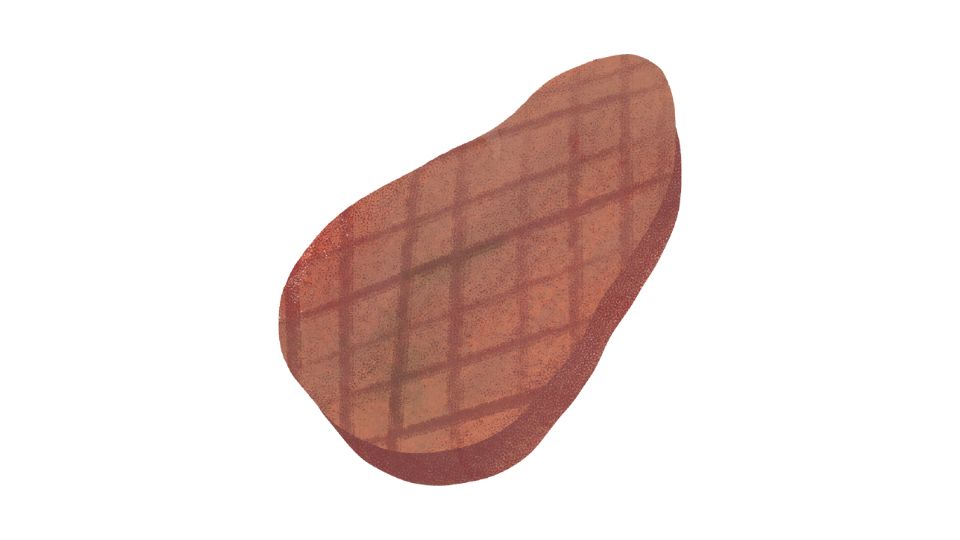Ever wondered how much protein you’re actually getting from that juicy steak on your plate?
I was curious about this too – especially because protein content can vary a LOT depending on which cut you’re eating.
Here’s the simple answer: one pound of steak (about 454 grams) typically contains between 100-130 grams of protein. But there’s way more to the story than just that number.
Let’s dive deeper into the meaty details… (sorry, couldn’t resist the pun)

The Complete Guide to Protein in Steak
Protein content by steak cut

Not all steaks are created equal when it comes to protein content. The leaner the cut, the more protein you’re getting per bite.
Here’s how different cuts stack up:
| Steak Cut | Protein per 100g (cooked) | Protein in 1 Pound (454g) |
|---|---|---|
| Top Round | ~29g | ~131g |
| Flank Steak | ~28g | ~127g |
| Bottom Round | ~28g | ~127g |
| Sirloin | ~27g | ~123g |
| Skirt Steak | ~27g | ~123g |
| Filet Mignon | ~26g | ~118g |
| Strip Steak | ~25g | ~114g |
| Ribeye | ~24g | ~109g |
| T-bone | ~25g | ~114g |
| Flat Iron | ~25g | ~114g |
Why the difference? It all comes down to fat content. Those delicious fatty cuts like ribeye have slightly less protein because more of their weight comes from fat instead.
That marbling might be amazing for flavor, but it reduces the protein density just a bit. Meanwhile, leaner cuts like top round are protein powerhouses – though they might need a bit more care when cooking to stay tender.
Protein in typical serving sizes
Let’s be real – who eats exactly one pound of steak? Here’s what you’re getting in more common portions:
- A 10-ounce (283g) ribeye delivers about 42 grams of protein along with a higher fat content (and those glorious calories, often around 800)
- A 10-ounce sirloin will give you closer to 50 grams of protein with less fat
This is why bodybuilders often reach for sirloin while flavor enthusiasts might prefer ribeye. Both are great, just different macronutrient profiles.
What affects steak’s protein content?

Several factors can influence exactly how much protein you’re getting:
1. Cooking method matters
How you cook your steak can affect its final protein content. Grilling, broiling, or pan-searing with minimal added fat are great ways to preserve the protein content without adding extra calories or fat.
2. Cooking level
While the difference isn’t huge, cooking level does matter a bit. Well-done steak loses more moisture, which slightly concentrates the protein content – but it can also affect texture and juiciness.
3. Raw vs. cooked weight
Remember that protein measurements are typically per cooked weight. A 16oz raw steak might cook down to 12oz, but the protein becomes more concentrated as water is lost during cooking.
Why steak protein is nutritional gold
Steak isn’t just any protein source – it’s a complete protein that provides all essential amino acids your body needs for muscle repair, immune function, and hormone production.
Beyond just protein, steak delivers key micronutrients that are harder to get elsewhere:
- Iron (in a highly absorbable form)
- Zinc
- Selenium
- B vitamins (especially B12)
This nutrient density makes beef an excellent protein choice for overall health beyond just muscle building.
How steak compares to other protein sources
| Meat | Protein (per 3oz cooked) |
|---|---|
| Steak (lean cuts) | ~21-25g |
| Chicken breast | 26g |
| Salmon | 22g |
| Tuna (canned) | 17g |
Steak holds its own against other protein sources, especially when choosing leaner cuts. While chicken breast might edge it out slightly on pure protein content, many nutritionists argue that red meat’s micronutrient profile makes it nutritionally superior in many ways.
Tracking your steak protein intake

For those of us counting macros (or just trying to hit protein goals), knowing exactly how much protein is in your steak is super helpful.
When tracking, remember these key points:
- Know your cut – A ribeye and top round are very different!
- Weigh cooked – For most accurate tracking
- Account for cooking method – Fried steak might have added fat calories
Many tracking apps like MyFitnessPal have specific entries for different steak cuts, making tracking much easier.
Put it all together: Practical takeaways

Here’s what you should remember about steak protein:
- One pound of steak = 100-130g protein depending on the cut
- Leaner cuts (top round, flank, sirloin) have the highest protein per ounce
- Fattier cuts (ribeye, T-bone) have slightly less protein but more flavor
- Steak provides all essential amino acids plus important micronutrients
- For maximum protein efficiency, choose leaner cuts and clean cooking methods
So next time you’re at the butcher counter deciding between that gorgeous marbled ribeye or the leaner sirloin, you’ll know exactly what you’re getting protein-wise. And honestly? Both are amazing choices – it just depends on your specific nutrition goals that day.
Research from the Journal of Nutrition shows that red meat protein may have unique benefits for muscle protein synthesis, making steak an excellent choice for anyone looking to build or maintain muscle mass.




Leave a Reply